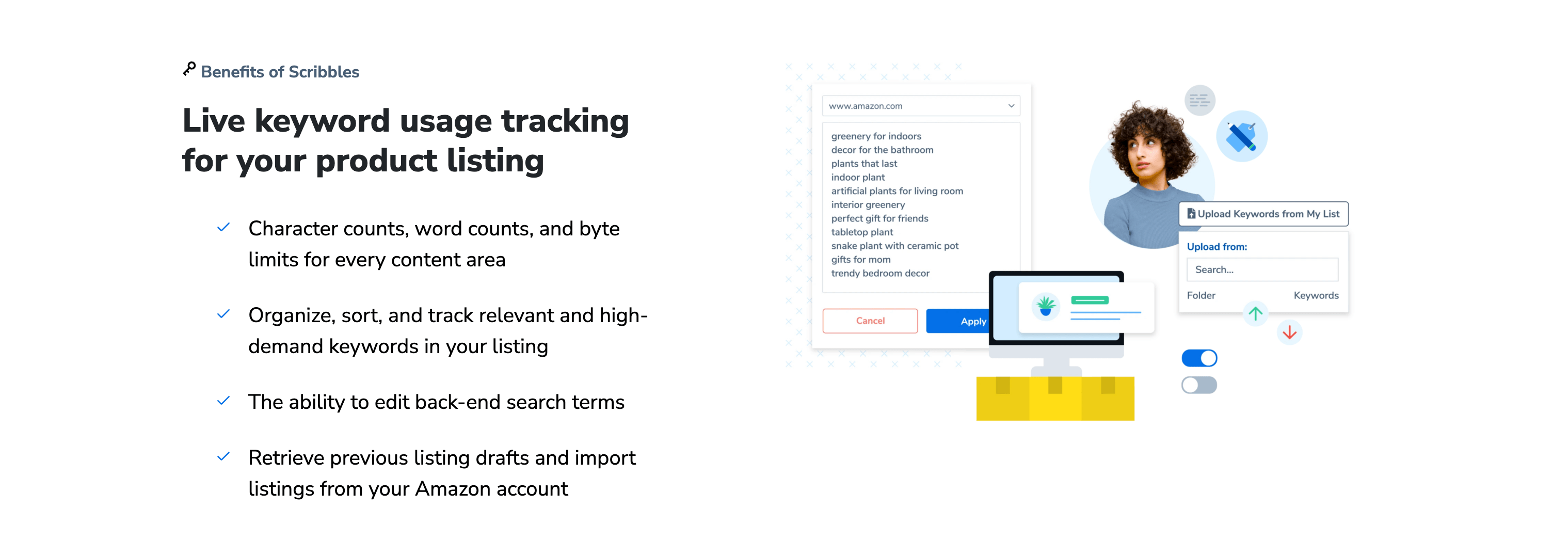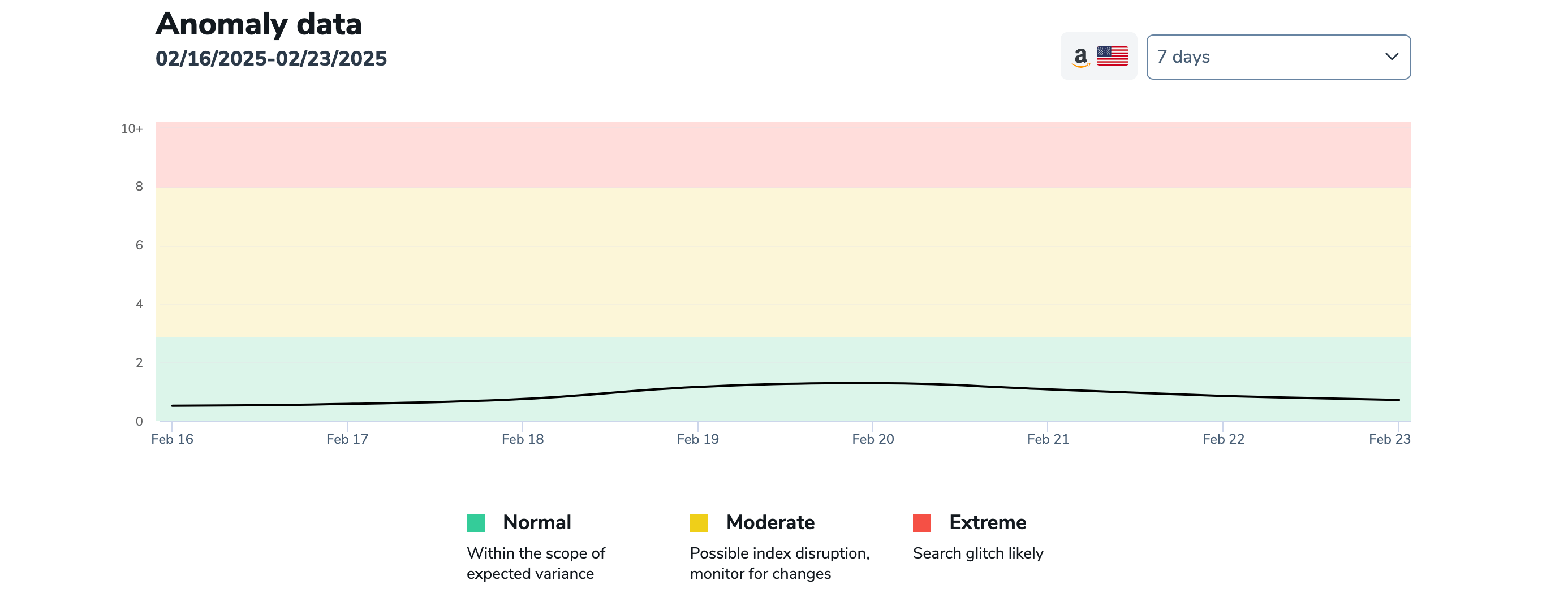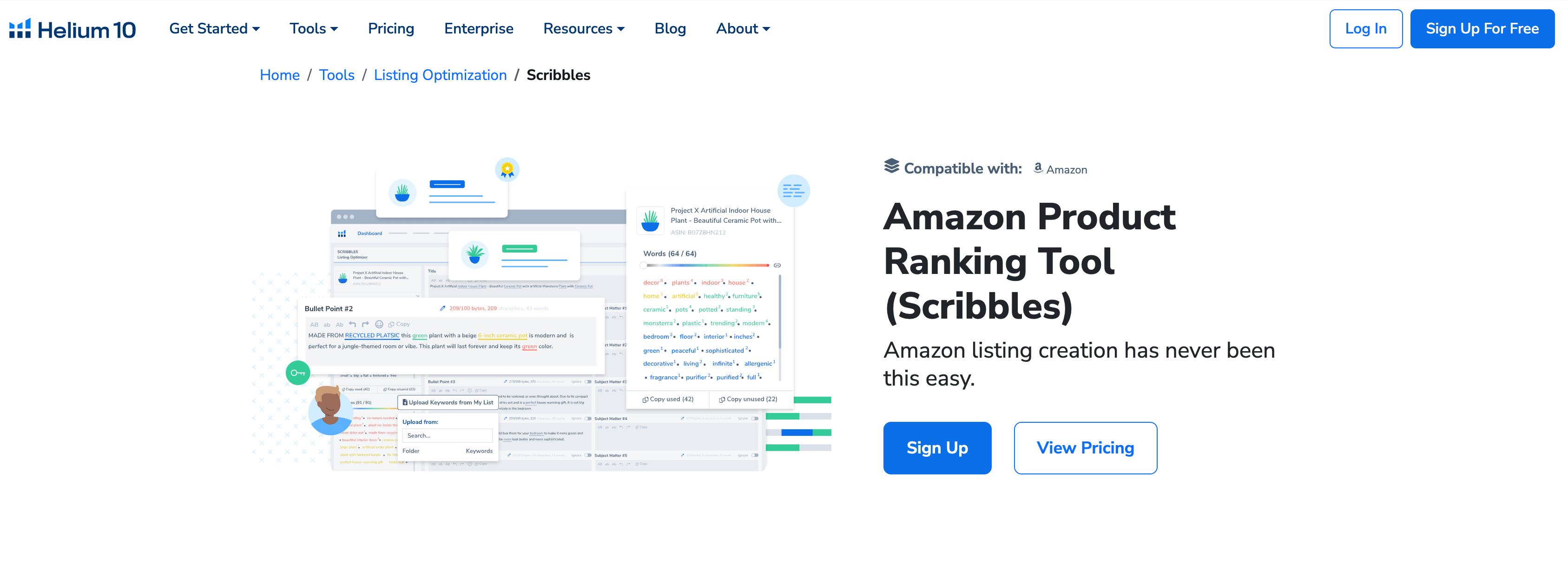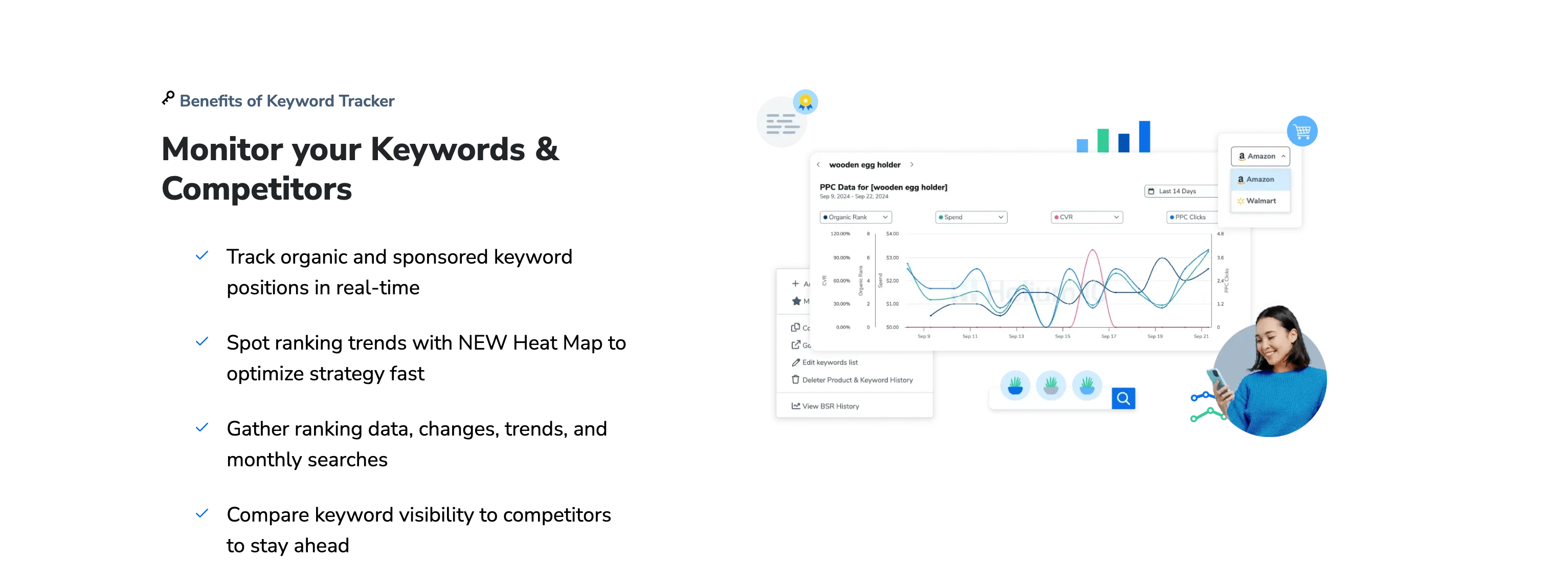Advanced Competitor Analysis Techniques Using Multiple Helium 10 Tools
1. Understanding the Importance of Competitor Analysis
Competitor analysis is a cornerstone of any successful business strategy. It allows companies to identify their strengths and weaknesses relative to their competitors, uncover market opportunities, and develop strategies to gain a competitive edge. In the dynamic world of e-commerce, where consumer preferences and market trends shift rapidly, staying ahead of the competition is crucial.
Helium 10 is a comprehensive suite of tools designed to help Amazon sellers optimize their listings, conduct thorough market research, and perform in-depth competitor analysis. Founded in 2015, Helium 10 has grown to become one of the most trusted names in the Amazon seller community. The platform offers over 30 tools that cater to various aspects of e-commerce, including product research, keyword tracking, and inventory management. By leveraging Helium 10’s tools, sellers can gain valuable insights into their competitors’ strategies, pricing models, and customer engagement tactics.
In this section, we’ll explore the fundamental aspects of competitor analysis and how Helium 10’s tools can be used to gain a competitive advantage. We’ll delve into the importance of understanding your competitors’ strengths and weaknesses, identifying market trends, and developing strategies to outperform them. Additionally, we’ll discuss how Helium 10’s tools can help you stay ahead of the curve by providing actionable insights and data-driven recommendations.
1.1 Identifying Key Competitors
The first step in competitor analysis is identifying who your competitors are. This involves not only looking at direct competitors but also indirect ones who may offer similar products or target the same customer base. Helium 10’s Xray tool is particularly useful for this purpose. Xray allows you to analyze product listings on Amazon and identify top-performing competitors based on sales, reviews, and pricing.
For example, if you’re selling a coffee grinder, you might use Xray to identify other coffee grinders with high sales volumes and positive reviews. By analyzing these listings, you can gain insights into what makes these products successful and identify areas where you can improve your own offering. Additionally, Xray provides data on the number of reviews, average rating, and pricing, which can help you benchmark your product against the competition.
1.2 Analyzing Competitor Listings
Once you’ve identified your key competitors, the next step is to analyze their product listings in detail. Helium 10’s Listing Analyzer tool is designed for this purpose. Listing Analyzer allows you to evaluate the quality of your competitors’ listings, including their titles, bullet points, descriptions, and images.
For instance, if you notice that a competitor’s listing has a high conversion rate, you can use Listing Analyzer to identify the elements that contribute to its success. This might include a well-optimized title, compelling bullet points, or high-quality images. By analyzing these elements, you can identify best practices and apply them to your own listings.
1.3 Monitoring Competitor Pricing
Pricing is a critical factor in e-commerce, and monitoring your competitors’ pricing strategies can provide valuable insights. Helium 10’s Profitability Calculator allows you to analyze your competitors’ pricing and determine their profit margins.
For example, if you notice that a competitor has lowered their price, you can use the Profitability Calculator to determine whether this price reduction is sustainable based on their cost structure. This information can help you make informed pricing decisions and avoid engaging in a price war that could erode your profit margins.
1.4 Tracking Competitor Keywords
Keywords play a crucial role in driving traffic to your product listings, and tracking your competitors’ keyword strategies can help you identify opportunities to improve your own SEO. Helium 10’s Cerebro tool is designed for keyword research and allows you to analyze the keywords your competitors are ranking for.
For instance, if you notice that a competitor is ranking highly for a particular keyword, you can use Cerebro to identify related keywords that you might not be targeting. This can help you expand your keyword strategy and drive more traffic to your listings.
1.5 Evaluating Competitor Reviews
Customer reviews provide valuable insights into what customers like and dislike about a product. Helium 10’s Review Insights tool allows you to analyze your competitors’ reviews and identify common themes and pain points.
For example, if you notice that a competitor’s product has a high number of negative reviews related to a specific feature, you can use this information to improve your own product and address the pain points that customers are experiencing. This can help you differentiate your product and gain a competitive advantage.

2. Leveraging Helium 10’s Tools for Comprehensive Competitor Analysis
Helium 10 offers a wide range of tools that can be used to conduct a comprehensive competitor analysis. In this section, we’ll explore how to leverage these tools to gain a deeper understanding of your competitors’ strategies and identify opportunities to outperform them.
2.1 Using Xray for Product Research
Xray is one of Helium 10’s most powerful tools for product research. It allows you to analyze product listings on Amazon and gain insights into their performance, including sales estimates, review counts, and pricing.
For example, if you’re considering launching a new product, you can use Xray to analyze similar products and determine their market potential. This can help you identify profitable niches and avoid entering oversaturated markets.
2.2 Utilizing Listing Analyzer for Optimization
Listing Analyzer is a valuable tool for optimizing your product listings. It allows you to evaluate the quality of your listings and identify areas for improvement.
For instance, if you’re struggling to convert visitors into customers, you can use Listing Analyzer to identify weaknesses in your listing, such as poorly optimized titles or lackluster bullet points. By addressing these issues, you can improve your conversion rates and drive more sales.
2.3 Monitoring Competitor Pricing with Profitability Calculator
The Profitability Calculator is an essential tool for monitoring your competitors’ pricing strategies. It allows you to analyze their pricing and determine their profit margins.
For example, if you notice that a competitor has lowered their price, you can use the Profitability Calculator to determine whether this price reduction is sustainable based on their cost structure. This information can help you make informed pricing decisions and avoid engaging in a price war that could erode your profit margins.
2.4 Tracking Competitor Keywords with Cerebro
Cerebro is a powerful tool for keyword research and allows you to analyze the keywords your competitors are ranking for.
For instance, if you notice that a competitor is ranking highly for a particular keyword, you can use Cerebro to identify related keywords that you might not be targeting. This can help you expand your keyword strategy and drive more traffic to your listings.
2.5 Evaluating Competitor Reviews with Review Insights
Review Insights is a valuable tool for analyzing your competitors’ reviews and identifying common themes and pain points.
For example, if you notice that a competitor’s product has a high number of negative reviews related to a specific feature, you can use this information to improve your own product and address the pain points that customers are experiencing. This can help you differentiate your product and gain a competitive advantage.

3. Advanced Techniques for Competitor Analysis
In this section, we’ll explore advanced techniques for competitor analysis using Helium 10’s tools. These techniques will help you gain a deeper understanding of your competitors’ strategies and identify opportunities to outperform them.
3.1 Analyzing Competitor Advertising Strategies
Helium 10’s Adtomic tool allows you to analyze your competitors’ advertising strategies and identify opportunities to improve your own campaigns.
For example, if you notice that a competitor is running a successful ad campaign, you can use Adtomic to analyze their ad copy, targeting, and bidding strategies. This can help you identify best practices and apply them to your own campaigns.
3.2 Monitoring Competitor Inventory Levels
Helium 10’s Inventory Protector tool allows you to monitor your competitors’ inventory levels and identify opportunities to capitalize on stockouts.
For instance, if you notice that a competitor is frequently running out of stock, you can use this information to increase your inventory levels and capture their customers. This can help you gain market share and drive more sales.
3.3 Tracking Competitor Sales Trends
Helium 10’s Trendster tool allows you to track your competitors’ sales trends and identify opportunities to capitalize on emerging trends.
For example, if you notice that a competitor’s sales are increasing rapidly, you can use Trendster to analyze the factors driving this growth. This can help you identify emerging trends and adjust your strategy accordingly.
3.4 Evaluating Competitor Branding Strategies
Helium 10’s Brand Analytics tool allows you to evaluate your competitors’ branding strategies and identify opportunities to differentiate your own brand.
For instance, if you notice that a competitor has a strong brand presence, you can use Brand Analytics to analyze their branding elements, such as logos, packaging, and messaging. This can help you identify best practices and apply them to your own branding strategy.
3.5 Analyzing Competitor Customer Engagement
Helium 10’s Customer Engagement tool allows you to analyze your competitors’ customer engagement strategies and identify opportunities to improve your own.
For example, if you notice that a competitor has a high level of customer engagement, you can use Customer Engagement to analyze their tactics, such as email marketing, social media, and customer reviews. This can help you identify best practices and apply them to your own customer engagement strategy.

4. Utilizing Helium 10’s Tools for Market Research
Market research is a critical component of competitor analysis, and Helium 10’s tools can provide valuable insights into market trends, customer preferences, and competitive dynamics. In this section, we’ll explore how to use Helium 10’s tools for market research.
4.1 Identifying Market Trends with Trendster
Trendster is a powerful tool for identifying market trends and analyzing their impact on your business.
For example, if you notice that a particular product category is experiencing rapid growth, you can use Trendster to analyze the factors driving this growth. This can help you identify emerging trends and adjust your strategy accordingly.
4.2 Analyzing Customer Preferences with Review Insights
Review Insights is a valuable tool for analyzing customer preferences and identifying opportunities to improve your product offerings.
For instance, if you notice that customers are consistently praising a particular feature of a competitor’s product, you can use this information to enhance your own product and meet customer expectations. This can help you differentiate your product and gain a competitive advantage.
4.3 Evaluating Market Saturation with Xray
Xray is a useful tool for evaluating market saturation and identifying opportunities to enter new markets.
For example, if you’re considering launching a new product, you can use Xray to analyze similar products and determine their market potential. This can help you identify profitable niches and avoid entering oversaturated markets.
4.4 Monitoring Competitive Dynamics with Inventory Protector
Inventory Protector is a valuable tool for monitoring competitive dynamics and identifying opportunities to capitalize on stockouts.
For instance, if you notice that a competitor is frequently running out of stock, you can use this information to increase your inventory levels and capture their customers. This can help you gain market share and drive more sales.
Brand Analytics is a powerful tool for tracking market share and identifying opportunities to grow your brand.
For example, if you notice that a competitor’s market share is increasing, you can use Brand Analytics to analyze their strategies and identify areas where you can improve your own. This can help you gain market share and drive more sales.

5. Developing a Data-Driven Competitor Analysis Strategy
In this section, we’ll explore how to develop a data-driven competitor analysis strategy using Helium 10’s tools. This strategy will help you make informed decisions and gain a competitive advantage.
5.1 Setting Clear Objectives
The first step in developing a data-driven competitor analysis strategy is setting clear objectives. This involves identifying what you want to achieve through your analysis, such as identifying market opportunities, improving your product offerings, or optimizing your pricing strategy.
For example, if your objective is to improve your product offerings, you might focus on analyzing your competitors’ products and identifying areas where you can enhance your own. This can help you differentiate your product and gain a competitive advantage.
5.2 Collecting and Analyzing Data
The next step is collecting and analyzing data using Helium 10’s tools. This involves using tools like Xray, Listing Analyzer, and Cerebro to gather data on your competitors’ strategies, pricing, and customer engagement.
For instance, if you’re analyzing your competitors’ pricing strategies, you might use the Profitability Calculator to determine their profit margins and identify opportunities to optimize your own pricing. This can help you make informed pricing decisions and avoid engaging in a price war that could erode your profit margins.
5.3 Identifying Opportunities and Threats
Once you’ve collected and analyzed the data, the next step is identifying opportunities and threats. This involves using the insights gained from your analysis to identify areas where you can improve your strategy and potential risks that could impact your business.
For example, if you notice that a competitor’s product has a high number of negative reviews related to a specific feature, you can use this information to improve your own product and address the pain points that customers are experiencing. This can help you differentiate your product and gain a competitive advantage.
5.4 Developing Actionable Strategies
The next step is developing actionable strategies based on your analysis. This involves using the insights gained from your analysis to develop strategies that will help you achieve your objectives.
For instance, if your objective is to improve your product offerings, you might develop a strategy to enhance your product based on the insights gained from analyzing your competitors’ products. This can help you differentiate your product and gain a competitive advantage.
5.5 Monitoring and Adjusting Your Strategy
The final step is monitoring and adjusting your strategy based on the results. This involves using Helium 10’s tools to track the effectiveness of your strategy and make adjustments as needed.
For example, if you notice that your pricing strategy is not driving the desired results, you might use the Profitability Calculator to analyze your pricing and make adjustments to improve your profit margins. This can help you optimize your pricing strategy and drive more sales.

6. Leveraging Helium 10’s Tools for Competitive Intelligence
Competitive intelligence is the process of gathering and analyzing information about your competitors to gain a competitive advantage. In this section, we’ll explore how to leverage Helium 10’s tools for competitive intelligence.
6.1 Gathering Competitive Intelligence with Xray
Xray is a powerful tool for gathering competitive intelligence. It allows you to analyze product listings on Amazon and gain insights into their performance, including sales estimates, review counts, and pricing.
For example, if you’re considering launching a new product, you can use Xray to analyze similar products and determine their market potential. This can help you identify profitable niches and avoid entering oversaturated markets.
6.2 Analyzing Competitor Strategies with Listing Analyzer
Listing Analyzer is a valuable tool for analyzing your competitors’ strategies. It allows you to evaluate the quality of their listings and identify areas for improvement.
For instance, if you notice that a competitor’s listing has a high conversion rate, you can use Listing Analyzer to identify the elements that contribute to its success. This might include a well-optimized title, compelling bullet points, or high-quality images. By analyzing these elements, you can identify best practices and apply them to your own listings.
6.3 Monitoring Competitor Pricing with Profitability Calculator
The Profitability Calculator is an essential tool for monitoring your competitors’ pricing strategies. It allows you to analyze their pricing and determine their profit margins.
For example, if you notice that a competitor has lowered their price, you can use the Profitability Calculator to determine whether this price reduction is sustainable based on their cost structure. This information can help you make informed pricing decisions and avoid engaging in a price war that could erode your profit margins.
6.4 Tracking Competitor Keywords with Cerebro
Cerebro is a powerful tool for tracking your competitors’ keyword strategies. It allows you to analyze the keywords they are ranking for and identify opportunities to improve your own SEO.
For instance, if you notice that a competitor is ranking highly for a particular keyword, you can use Cerebro to identify related keywords that you might not be targeting. This can help you expand your keyword strategy and drive more traffic to your listings.
6.5 Evaluating Competitor Reviews with Review Insights
Review Insights is a valuable tool for evaluating your competitors’ reviews and identifying common themes and pain points.
For example, if you notice that a competitor’s product has a high number of negative reviews related to a specific feature, you can use this information to improve your own product and address the pain points that customers are experiencing. This can help you differentiate your product and gain a competitive advantage.

7. Implementing a Comprehensive Competitor Analysis Framework
In this section, we’ll explore how to implement a comprehensive competitor analysis framework using Helium 10’s tools. This framework will help you systematically analyze your competitors and develop strategies to outperform them.
7.1 Defining Your Competitor Analysis Scope
The first step in implementing a comprehensive competitor analysis framework is defining your scope. This involves identifying the key competitors you want to analyze and the specific aspects of their strategy you want to focus on.
For example, if you’re analyzing your competitors’ pricing strategies, you might focus on their pricing models, discounts, and promotions. This can help you identify opportunities to optimize your own pricing strategy and gain a competitive advantage.
7.2 Collecting Data with Helium 10’s Tools
The next step is collecting data using Helium 10’s tools. This involves using tools like Xray, Listing Analyzer, and Cerebro to gather data on your competitors’ strategies, pricing, and customer engagement.
For instance, if you’re analyzing your competitors’ keyword strategies, you might use Cerebro to identify the keywords they are ranking for and analyze their performance. This can help you expand your keyword strategy and drive more traffic to your listings.
7.3 Analyzing and Interpreting Data
Once you’ve collected the data, the next step is analyzing and interpreting it. This involves using the insights gained from your analysis to identify opportunities and threats.
For example, if you notice that a competitor’s product has a high number of negative reviews related to a specific feature, you can use this information to improve your own product and address the pain points that customers are experiencing. This can help you differentiate your product and gain a competitive advantage.
7.4 Developing Actionable Insights
The next step is developing actionable insights based on your analysis. This involves using the insights gained from your analysis to develop strategies that will help you achieve your objectives.
For instance, if your objective is to improve your product offerings, you might develop a strategy to enhance your product based on the insights gained from analyzing your competitors’ products. This can help you differentiate your product and gain a competitive advantage.
7.5 Monitoring and Adjusting Your Strategy
The final step is monitoring and adjusting your strategy based on the results. This involves using Helium 10’s tools to track the effectiveness of your strategy and make adjustments as needed.
For example, if you notice that your pricing strategy is not driving the desired results, you might use the


Comments